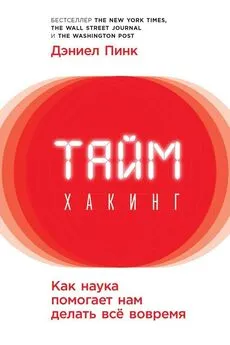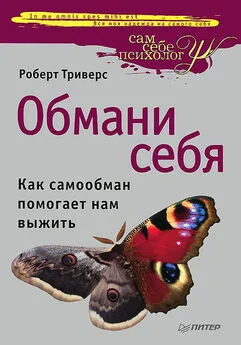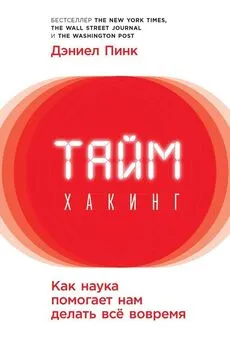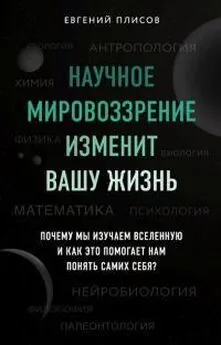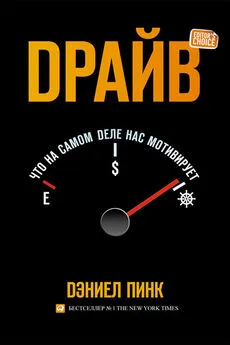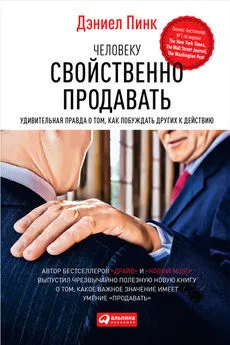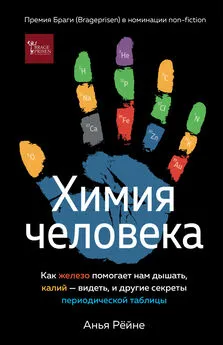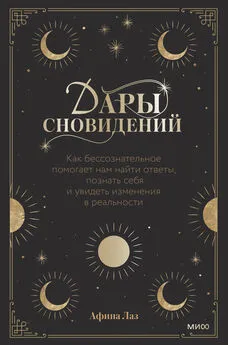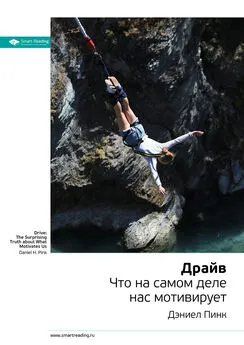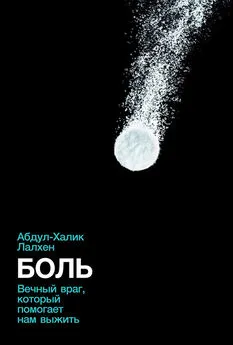Дэниель Пинк - Таймхакинг. Как наука помогает нам делать всё вовремя
- Название:Таймхакинг. Как наука помогает нам делать всё вовремя
- Автор:
- Жанр:
- Издательство:Литагент Альпина
- Год:2018
- Город:Москва
- ISBN:978-5-9614-1515-5
- Рейтинг:
- Избранное:Добавить в избранное
-
Отзывы:
-
Ваша оценка:
Дэниель Пинк - Таймхакинг. Как наука помогает нам делать всё вовремя краткое содержание
Таймхакинг. Как наука помогает нам делать всё вовремя - читать онлайн бесплатно ознакомительный отрывок
Интервал:
Закладка:
44
Catharine Gale and Christopher Martyn, “Larks and Owls and Health, Wealth, and Wisdom,” British Medical Journal 317, no. 7174 (1998): 1675–1677.
45
Richard D. Roberts and Patrick C. Kyllonen, “Morning-Eveningness and Intelligence: Early to Bed, Early to Rise Will Make You Anything but Wise!” Personality and Individual Differences 27 (1999): 1123–1133; Davide Piffer et al., “Morning-Eveningness and Intelligence Among High-Achieving US Students: Night Owls Have Higher GMAT Scores than Early Morning Types in a Top-Ranked MBA Program,” Intelligence 47 (2014): 107–112.
46
Christoph Randler, “Evening Types Among German University Students Score Higher on Sense of Humor After Controlling for Big Five Personality Factors,” Psychological Reports 103, no. 2 (2008): 361–370.
47
Galen V. Bodenhausen, “Stereotypes as Judgmental Heuristics: Evidence of Circadian Variations in Discrimination,” Psychological Science 1, no. 5 (1990): 319–322.
48
Mareike B. Wieth and Rose T. Zacks, “Time-of-Day Effects on Problem Solving: When the Non-optimal is Optimal,” Thinking & Reasoning 17, no. 4 (2011): 387–401.
49
Cynthia P. May and Lynn Hasher, “Synchrony Effects in Inhibitory Control over Thought and Action,” Journal of Experimental Psychology: Human Perception and Performance 24, no. 2 (1998): 363–379; Ana Adan et al., “Circadian Typology: A Comprehensive Review,” Chronobiology International 29, no. 9 (2012): 1153–1175.
50
Ángel Correa, Enrique Molina, and Daniel Sanabria, “Effects of Chronotype and Time of Day on the Vigilance Decrement During Simulated Driving,” Accident Analysis & Prevention 67 (2014): 113–118.
51
John A. E. Anderson et al., “Timing Is Everything: Age Differences in the Cognitive Control Network Are Modulated by Time of Day,” Psychology and Aging 29, no. 3 (2014): 648–658.
52
Brian C. Gunia, Christopher M. Barnes, and Sunita Sah, “The Morality of Larks and Owls: Unethical Behavior Depends on Chronotype as Well as Time of Day,” Psychological Science 25, no. 12 (2014): 2272–2274; Maryam Kouchaki and Isaac H. Smith, “The Morning Morality Effect; The Influence of Time of Day on Unethical Behavior,” Psychological Science 25, no. 1 (2013): 95–102.
53
Mason Currey, ed., Daily Rituals: How Artists Work (New York: Knopf, 2013), 62–63.
54
Там же, 29–32, 62–63.
55
Céline Vetter et al., “Aligning Work and Circadian Time in Shift Workers Improves Sleep and Reduces Circadian Disruption,” Current Biology 25, no. 7 (2015): 907–911.
56
Karen Van Proeyen et al., “Training in the Fasted State Improves Glucose Tolerance During Fat-Rich Diet,” Journal of Physiology 588, no. 21 (2010): 4289–4302.
57
Michael R. Deschenes et al., “Chronobiological Effects on Exercise: Performance and Selected Physiological Responses,” European Journal of Applied Physiology and Occupational Physiology 77, no. 3 (1998): 249–560.
58
Elise Facer-Childs and Roland Brandstaetter, “The Impact of Circadian Phenotype and Time Since Awakening on Diurnal Performance in Athletes,” Current Biology 25, no. 4 (2015): 518–522.
59
Boris I. Medarov, Valentin A. Pavlov, and Leonard Rossoff, “Diurnal Variations in Human Pulmonary Function,” International Journal of Clinical Experimental Medicine 1, no. 3 (2008): 267–273.
60
Barry Drust et al., “Circadian Rhythms in Sports Performance: An Update,” Chronobiology International 22, no. 1 (2005), 21–44; Joao Paulo P. Rosa et al., “2016 Rio Olympic Games: Can the Schedule of Events Compromise Athletes’ Performance?” Chronobiology International 33, no. 4 (2016): 435–440.
61
American Council on Exercise, “The Best Time to Exercise,” Fit Facts (2013). (Электронная версия: https://www.acefitness.org/fitfacts/pdfs/fitfacts/itemid_2625.pdf.
62
Miguel Debono et al., “Modified-Release Hydrocortisone to Provide Circadian Cortisol Profiles,” Journal of Clinical Endocrinology & Metabolism 94, no. 5 (2009): 1548–1554.)
63
Alicia E. Meuret et al., “Timing Matters: Endogenous Cortisol Mediates Benefits from Early-Day Psychotherapy,” Psychoneuroendocrinology 74 (2016): 197–202.
64
Melanie Clay Wright et al., “Time of Day Effects on the Incidence of Anesthetic Adverse Events,” Quality and Safety in Health Care 15, no. 4 (2006): 258–263. Цитата ведущего автора исследования в конце абзаца из статьи “Time of Surgery Influences Rate of Adverse Health Events Due to Anesthesia,” опубликованной в бюллетене Duke News от 3 августа 2006 года.
65
Alexander Lee et al., “Queue Position in the Endoscopic Schedule Impacts Effectiveness of Colonoscopy,” American Journal of Gastroenterology 106, no. 8 (2011): 1457–1465.
66
Одно из исследований выявило любопытное гендерное различие. Если колоноскопия проводилась во второй половине дня, то количество выявленных полипов и аденом обычно оказывалось ниже, но… в основном это касалось лишь пациентов женского пола. См.: Shailendra Singh et al., “Differences Between Morning and Afternoon Colonoscopies for Adenoma Detection in Female and Male Patients,” Annals of Gastroenterology 29, no. 4 (2016): 497–501. Некоторые другие исследователи относятся к эффекту времени суток с большей настороженностью. См, например, Jerome D. Waye, “Should All Colonoscopies Be Performed in the Morning?” Nature Reviews: Gastroenterology & Hepatology 4, no. 7 (2007): 366–367.
67
Madhusudhan R. Sanaka et al., “Afternoon Colonoscopies Have Higher Failure Rates Than Morning Colonoscopies,” American Journal of Gastroenterology 101, no. 12 (2006): 2726–2730; Jerome D. Waye, “Should All Colonoscopies Be Performed in the Morning?” Nature Reviews: Gastroenterology & Hepatology 4, no. 7 (2007): 366–367.
68
Jeffrey A. Linder et al., “Time of Day and the Decision to Prescribe Antibiotics,” JAMA Internal Medicine 174, no. 12 (2014): 2029–2031.
69
Hengchen Dai et al., “The Impact of Time at Work and Time Off from Work on Rule Compliance: The Case of Hand Hygiene in Health Care,” Journal of Applied Psychology 100, no. 3 (2015): 846–862. Цифра в 38 % представляет собой «аппроксимированное значение отклонений от установленного порядка в течение 12-часовой смены, или снижение процента соответствия установленному порядку на 8,7 процентных пункта в среднем на одного сотрудника медперсонала в течение 12-часовой смены».
70
Hengchen Dai et al., “The Impact of Time at Work and Time Off from Work on Rule Compliance: The Case of Hand Hygiene in Health Care,” Journal of Applied Psychology 100, no. 3 (2015): 846–862. Цифра в 38 % представляет собой «аппроксимированное значение отклонений от установленного порядка в течение 12-часовой смены, или снижение процента соответствия установленному порядку на 8,7 процентных пункта в среднем на одного сотрудника медперсонала в течение 12-часовой смены».
71
Jim Horne and Louise Reyner, “Vehicle Accidents Related to Sleep: A Review,” Occupational and Environmental Medicine 56, no. 5 (1999): 289–294.
72
Justin Caba, “Least Productive Time of the Day Officially Determined to Be 2:55 PM: What You Can Do to Stay Awake?” Medical Daily, June 4, 2013. (Электронная версия: http://www.medicaldaily.com/least-productive-time-day-officially-determined-be-255-pm-what-you-can-do-stay-awake-246495.)
73
Maryam Kouchaki and Isaac H. Smith, “The Morning Morality Effect: The Influence of Time of Day on Unethical Behavior,” Psychological Science 25, no. 1 (2014): 95–102; Maryam Kouchaki, “In the Afternoon, the Moral Slope Gets Slipperier,” Harvard Business Review, May 2014.
74
Julia Neily et al., “Association Between Implementation of a Medical Team Training Program and Surgical Mortality,” JAMA 304, no. 15 (2010): 1693–1700.
75
Hans Henrik Sievertsen, Francesca Gino, and Marco Piovesan, “Cognitive Fatigue Influences Students’ Performance on Standardized Tests,” Proceedings of the National Academy of Sciences 113, no. 10 (2016): 2621–2624.
76
Francesca Gino, “Don’t Make Important Decisions Late in the Day,” Harvard Business Review, February 23, 2016.
77
Hans Henrik Sievertsen, Francesca Gino, and Marco Piovesan, “Cognitive Fatigue Influences Students’ Performance on Standardized Tests,” Proceedings of the National Academy of Sciences 113, no. 10 (2016): 2621–2624.
78
Kyoungmin Cho, Christopher M. Barnes, and Cristiano L. Guanara, “Sleepy Punishers Are Harsh Punishers: Daylight Saving Time and Legal Sentences,” Psychological Science 28, no. 2 (2017): 242–247.
79
Shai Danziger, Jonathan Levav, and Liora Avnaim-Pesso, “Extraneous Factors in Judicial Decisions,” Proceedings of the National Academy of Sciences 108, no. 17 (2011): 6889–6892.
80
Atsunori Ariga and Alejandro Lleras, “Brief and Rare Mental ‘Breaks’ Keep You Focused: Deactivation and Reactivation of Task Goals Preempt Vigilance Decrements,” Cognition 118, no. 3 (2011): 439–443.
81
Emily M. Hunter and Cindy Wu, “Give Me a Better Break: Choosing Workday Break Activities to Maximize Resource Recovery,” Journal of Applied Psychology 101, no. 2 (2016): 302–311.
82
Hannes Zacher, Holly A. Brailsford, and Stacey L. Parker, “Micro-Breaks Matter: A Diary Study on the Effects of Energy Management Strategies on Occupational Well-Being,” Journal of Vocational Behavior 85, no. 3 (2014): 287–297.
Читать дальшеИнтервал:
Закладка:
